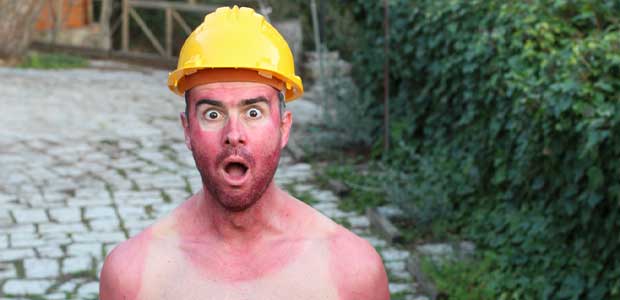
Summer, Skin Safety and Sun: How to Protect Workers with High Exposure to the Elements
- By Lauren Lazar
- Aug 18, 2021
Outdoor work environments bring on unique challenges during the summer months. According to most recent data CDC, 285 construction workers have died from heat-related illnesses in recent years, accounting for more than one-third of all occupational deaths from heat exposure. Beyond heat-related illnesses, these workers also face longer-term threats from diseases, including skin cancer. While industrial workers and outside laborers may be at elevated risk, employers and their occupational health providers can take steps to mitigate injuries by implementing sun safety practices and protocols on the work sites.
Heat Safety and Risk Prevention Practices
While the most common heat-related injuries include heat stress, heat stroke and heat exhaustion may be familiar to many, general over exposure to the sun can also lead to serious accidents and injuries caused by dizziness, sweaty hands, slowed response time and fatigue. It is impossible to eliminate all risk associated with summer conditions, but employers, along with their onsite medical providers, can take several steps to lessen injuries and illnesses by educating and empowering employees to understand risks and take smart preventative actions.
The first step in creating a safer work environment is to educate workers on the symptoms of heat-related illnesses. Employers should stress the importance of looking out for symptoms like cool, moist skin, heavy sweating, changes in pulse, feelings of faintness and suffering from muscle cramps. Many of these symptoms may not automatically set off alarms, but they can be an indicator of serious health conditions. Workers should also be reminded of emergency protocols and processes and seek immediate medical guidance should they or a colleague experience symptoms.
Encouraging workers to wear proper clothing on the worksite, including sweat-wicking clothing that covers exposed skin areas and cooling headbands, can also help prevent heat-related illnesses. The second step is to promote healthy habits on and off the worksite. Nutrition and hydration are both critical to the health and safety of workers in physically demanding settings. Ongoing wellbeing sessions, hydration site walks and competitions can help educate workers on the vital role proper nutrition and hydration plays in overcoming heat related injuries and improving energy levels.
Finally, enforcing regular breaks in shady or temperature-controlled areas and scheduling work during off-peak hours can help reduce the risk of over exposure.
Skin Health Safety
Among the most significant long-term risks of over exposure to summer elements is skin cancer. Skin cancer affects 1.8 million Americans annually and that number is estimated to grow by 5.8 percent in 2021. Most cases of skin cancer are due to the overexposure of UV rays from the sun or artificial sources. Workers must understand: even if you are not susceptible to sun burns, you may still be at risk for sun related diseases.
Those who work outside, should take extra precautions to help reduce health risks. Wearing sunscreen is one of the best available defenses, however, only 15 percent to 24 percent of construction workers report regularly wearing it, according to the CDC.
Similar to preventing heat-related illness, the answer to reducing skin cancer risk is a blend of education and wellness programming. Start with risk education. Hold candid conversations about the prevalence and seriousness of skin cancer. While it can be an uncomfortable topic, most people know someone who has suffered from cancer. Encouraging a dialogue around the topic will reinforce the necessity of taking steps to help prevent the disease.
Further, encouraging employees to examine their skin can help catch any disease in an early state. Encourage employees to visit a dermatologist regularly and self-check their skin to look for common irregularities including:
• A new, expanding, or changing growth, spot or bump on the skin
• A sore that bleeds and/or does not heal after several weeks
• A rough or scaly red patch, which might crust or bleed
• A wart-like growth
• A mole (or other spot on the skin) that is new or changing in size, shape or color
• A mole with an odd shape, irregular borders or areas of different colors
Finally, consider requiring and incentivizing the regular use of sunscreen. Employers and employees should consider sunscreen as primary PPE. Making it readily available on worksites and sharing frequent reminders to apply and reapply can be a good way of gaining buy-in and ultimately preventing over exposure.
Care and Concern Programs
Healthy, engaged employees drive profitable, successful businesses. Building a culture of care and concern starts with implementing actionable steps that engage the workforce. It requires precision-tailored wellness programs for each worksite with a focus on the mind, body and safety of each worker. The demands of employers including safety and human resource professionals are often exhaustive. Having an occupational health professional onsite can serve as an extension of management on the ground and ensures the wellness and safety of each worker.